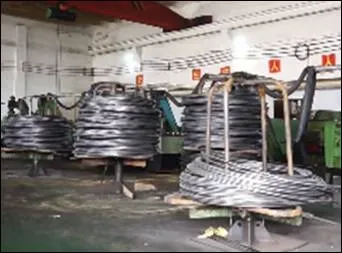szept . 24, 2024 17:48 Back to list
Guide to M12 Fixing Bolts for Reliable Fastening Solutions
Understanding M12 Fixing Bolts A Comprehensive Guide
When it comes to mechanical engineering and construction, fixing bolts play an essential role in ensuring the stability and durability of structures and machinery. Among the myriad of fixing bolts available in the market, M12 fixing bolts are particularly popular thanks to their versatile applications and impressive strength characteristics. In this article, we’ll explore what M12 fixing bolts are, their specifications, applications, and best practices for use.
What are M12 Fixing Bolts?
M12 fixing bolts are categorized by their nominal diameter, which is 12 millimeters. The M in M12 signifies that these bolts are threaded to ISO metric specifications, making them standard components in engineering applications. These bolts typically come in various grades and lengths, which can significantly affect their mechanical properties and appropriateness for specific applications.
Specifications
The specifications of M12 fixing bolts can vary significantly based on their grade and intended use. Common grades include
- Grade 8.8 This is a medium strength bolt that is used in general engineering applications. It has a tensile strength of about 800 MPa and a yield strength of approximately 640 MPa.
- Grade 10.9 With a higher tensile strength of around 1,000 MPa, these bolts are used in heavier applications, such as automotive and machinery assemblies.
- Grade 12.9 Representing the highest standard strength, Grade 12.9 bolts boast a tensile strength of up to 1,200 MPa, making them suitable for extreme applications where high stress is a concern.
Applications
M12 fixing bolts find use across various industries, including
- Construction They are widely employed in the assembly of structural steel, where robust joints are required.
m12 fixing bolts

- Automotive These bolts are vital components in car manufacturing, used to hold together critical parts such as engines and chassis.
- Manufacturing In machinery production, M12 bolts are essential for forming secure connections between different components, ensuring stability and operational efficiency.
- Furniture Assembly Many flat-pack furniture items utilize M12 fixing bolts for easy assembly and disassembly, providing both strength and convenience.
Best Practices for Use
To ensure the optimal performance of M12 fixing bolts, here are some best practices
1. Correct Torque Settings Always use a torque wrench to tighten M12 bolts to the manufacturer’s specifications. Over-tightening can lead to bolt failure, while insufficient torque may cause joints to loosen.
2. Use the Right Washer A washer helps distribute the load and can prevent surface damage. It’s essential to choose the right washer type for the specific application, whether it’s flat, lock, or spring washer.
3. Corrosion Protection For applications exposed to moisture or harsh environments, consider using galvanized or coated bolts to prevent rust and degradation.
4. Regular Maintenance Periodic checks should be conducted to ensure bolts remain tight and in good condition, particularly in high-stress applications.
Conclusion
M12 fixing bolts are a foundational component in construction and engineering. Their versatility, strength, and ease of use make them a go-to solution for many applications. By adhering to proper specifications and maintenance practices, engineers and builders can ensure their structures and machinery remain safe and efficient for years to come. Whether you are constructing a building, assembling machinery, or just securing furniture, understanding M12 fixing bolts can make all the difference in achieving a reliable outcome.


